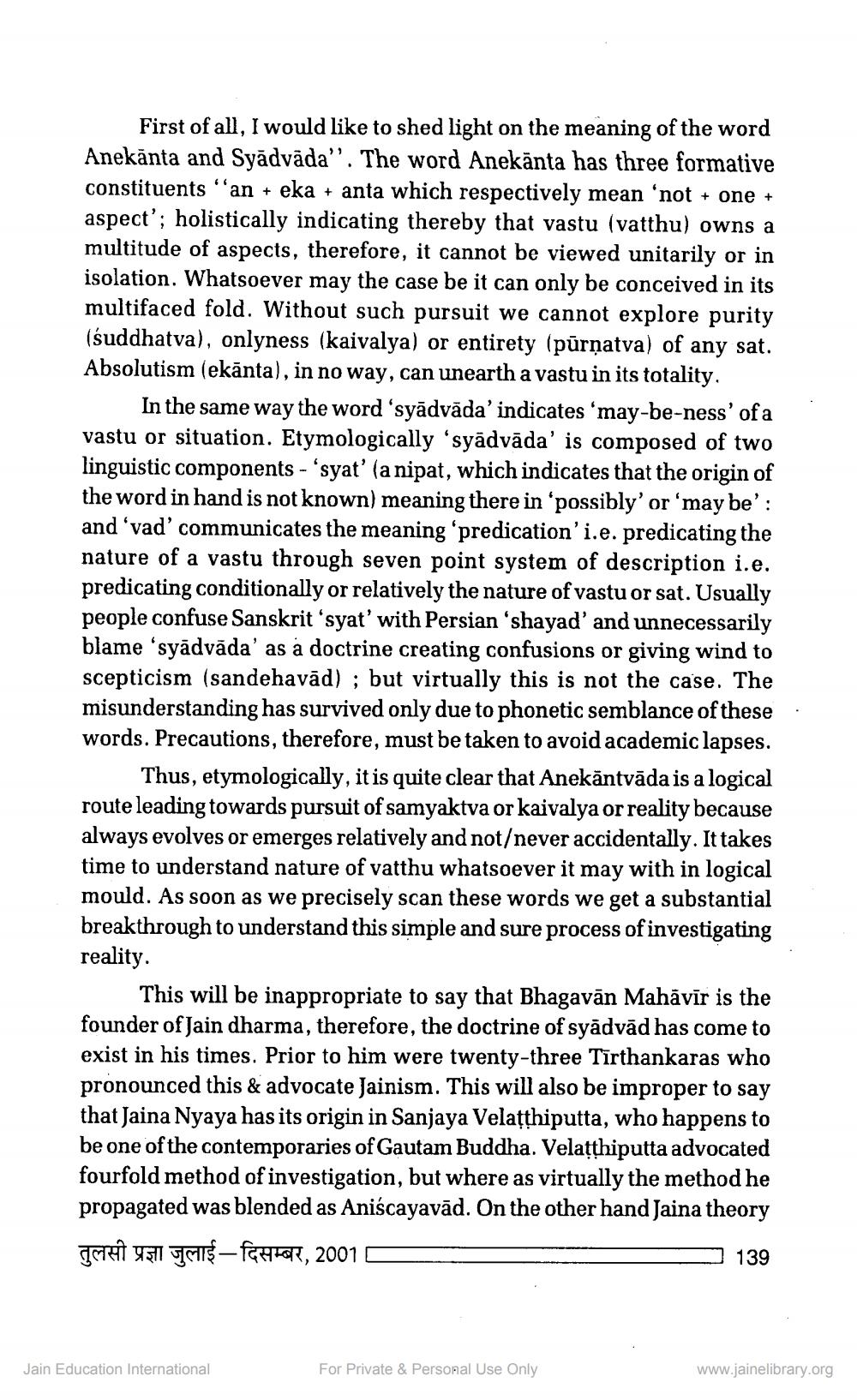________________
First of all, I would like to shed light on the meaning of the word Anekānta and Syādvāda”. The word Anekānta has three formative constituents an + eka + anta which respectively mean ‘not + one + aspect'; holistically indicating thereby that vastu (vatthu) owns a multitude of aspects, therefore, it cannot be viewed unitarily or in isolation. Whatsoever may the case be it can only be conceived in its multifaced fold. Without such pursuit we cannot explore purity (suddhatva), onlyness (kaivalya) or entirety (pūrņatva) of any sat. Absolutism (ekānta), in no way, can unearth a vastu in its totality.
In the same way the word 'syādvāda' indicates ‘may-be-ness' of a vastu or situation. Etymologically ‘syadvāda' is composed of two linguistic components - 'syat' (a nipat, which indicates that the origin of the word in hand is not known) meaning there in 'possibly' or 'may be': and ‘vad' communicates the meaning 'predication'i.e. predicating the nature of a vastu through seven point system of description i.e. predicating conditionally or relatively the nature of vastu or sat. Usually people confuse Sanskrit ‘syat' with Persian 'shayad' and unnecessarily blame 'syādvāda' as a doctrine creating confusions or giving wind to scepticism (sandehavād) ; but virtually this is not the case. The misunderstanding has survived only due to phonetic semblance of these words. Precautions, therefore, must be taken to avoid academic lapses.
Thus, etymologically, it is quite clear that Anekāntvāda is a logical route leading towards pursuit of samyaktva or kaivalya or reality because always evolves or emerges relatively and not/never accidentally. It takes time to understand nature of vatthu whatsoever it may with in logical mould. As soon as we precisely scan these words we get a substantial breakthrough to understand this simple and sure process of investigating reality.
This will be inappropriate to say that Bhagavān Mahāvīr is the founder of Jain dharma, therefore, the doctrine of syādvād has come to exist in his times. Prior to him were twenty-three Tīrthankaras who pronounced this & advocate Jainism. This will also be improper to say that Jaina Nyaya has its origin in Sanjaya Velaţthiputta, who happens to be one of the contemporaries of Gautam Buddha. Velatthiputta advocated fourfold method of investigation, but where as virtually the method he propagated was blended as Aniścayavād. On the other hand Jaina theory TAHT 4511 GS-FG502, 2001
- 139
Jain Education International
For Private & Personal Use Only
www.jainelibrary.org




